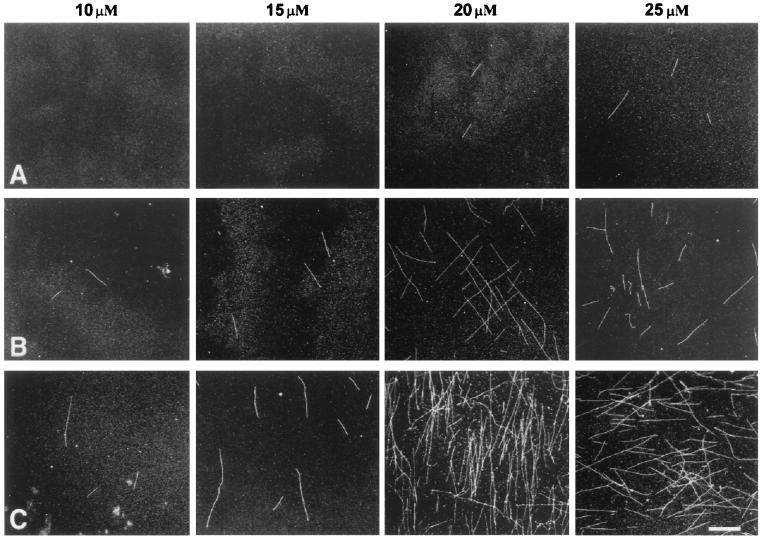Figure 2.
The effect of MAP60 on the assembly of rhodamine-tubulin. Rhodamine-tubulin was used at concentrations of 10 μM, 15 μM, 20 μM, and 25 μM. Samples were analyzed after 90 min of incubation. In the controls (no MAP added; A), the first two concentrations did not support self-assembly, whereas a limited degree of self-assembly occurred at concentrations of 20 μM and 25 μM rhodamine-tubulin. Addition of 0.05 μM (B) or 0.2 μM (C) MAP60 to solutions containing 10 or 15 μM rhodamine-tubulin resulted in the assembly of a few microtubules. When, however, MAP60 was mixed with 20 or 25 μM rhodamine-tubulin, the results were more dramatic with the formation of large numbers of microtubules. A concentration-dependent MAP60 effect [compare 0.05 μM (B) and 0.2 μM (C) MAP60], barely detectable at non-self-polymerizing concentrations of rhodamine-tubulin (i.e., 10 or 15 μM), was also much more evident when rhodamine-tubulin was used at self-polymerizing concentrations (i.e., 20 and 25 μM). (Bar = 10 μm.)

